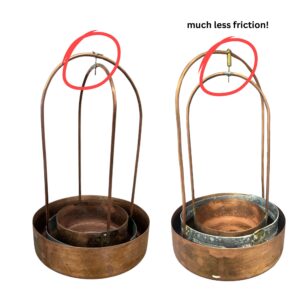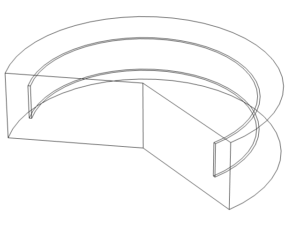Ryan Yu | 8/12/25
There are many experimental uncertainties that affect rotational velocity. Friction between the pivot and arms; Back EMF; fluid drag. We fixed this problem by remaking the pivot with 3/56th pivot point and there was very little friction.

Drag from the zinc conductor in the fluid was the most obvious source of experimental uncertainty, so I set out to model it in COMSOL, using an 2D Axisymmetric model and the laminar flow interface.

I prescribed the rotational acceleration of our optimized configuration from Part II, .8962 rad/sec^2, to the submerged zinc ring, and instructed COMSOL to solve for fluid disturbance. I then integrated the shear rate to across the surface of the zinc to get a value of 3.847E-4 (1/s).
Shear stress is shear rate times fluid viscosity (Newton’s law of viscosity)
The fluid viscosity of 35% sulfuric acid is .025, so shear stress is calculated to be 9.62E-06 Pascals.
The opposing force (fluid drag) is torque (which is shear stress) times area.  *Thank you ilearnengineering.com!*
*Thank you ilearnengineering.com!*
The formula for the lateral surface area of our zinc ring is 2(pi)(r)(h);
A= 8.482E-3(m2)
F*A=(9.62E-06)*(8.482E-3)=8.16E-8
So the force of drag, even for the most headstrong rotating zinc ring, is orders of magnitude lesser than our Lorentz forces, which are generally in the E-5 to E-4 range. The force of drag is (in my opinion) basically negligible!
Unrelated but very cool visualization of the velocity in the sulfuric acid as the zinc rotates with optimal rotational velocity: (sped up, over a minute interval)